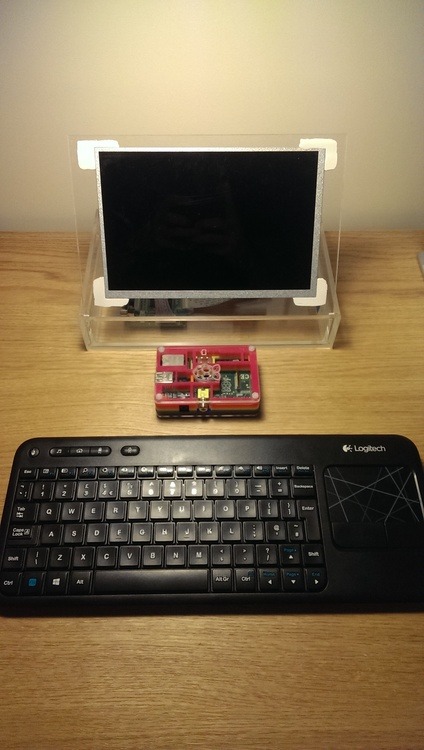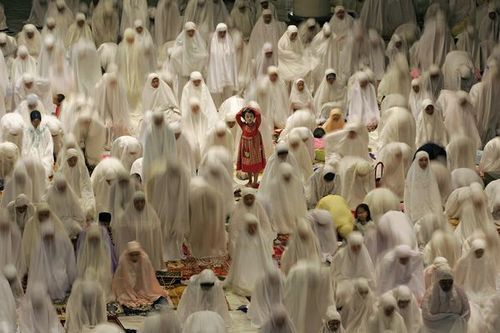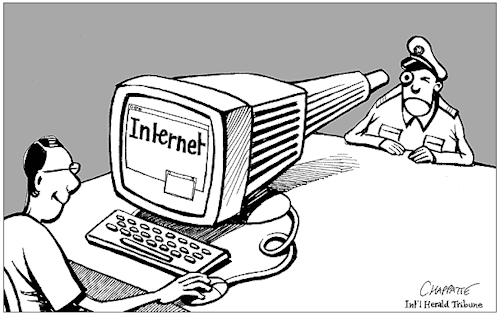Contemporary culture, politics and historical info about the Middle East. I also promote events from the NY tri-state area that represent all things Middle East.
Don't wanna be here? Send us removal request.
Text
PALESTINE'S FIRST SKATE PARK

From Vice.com:
"Although Palestine has played host to the occasional mini ramp and fun box, built by enthusiastic foreigners in need of a place to skate, the 1,000 square-foot site at Zababdeh is the West Bank’s first proper skate park. Opening this week, it was funded and built by SkatePal, a volunteer-run nonprofit founded by University of Edinburgh Arabic graduate Charlie Davis in 2012. It will be run by a small but growing community of Palestinian skaters"
Read the article, "Say Hello to Palestine's First Skate Park", here.
1 note
·
View note
Text
IN LEBANON REFUGEE CAMPS, EDUCATION TAKES A NEW LOOK

The first prototype of a low cost computer for accessing learning resources using a Raspberry Pi computer and a screen from: http://hdmipi.com/ – created by the innovation team in Lebanon. Photo credit: James Cranwell-Ward, UNICEF Lebanon
_________________
From BarakaBits.com:
"Raspberry Pi is a computer designed to teach young people to program. Tiny and low-cost, it can be plugged into a TV and still has the processing power of a desktop PC. It is not only an affordable way to introduce children to technology but, more importantly, it stimulates them to become future innovators.
This summer, the Pi will enter Lebanon’s refugee camps, where children will be able to explore how to make games while learning about their rights as a child. The program, called Pi4Learning, was developed by Unicef Lebanon to help get Syrian children back into learning through a curriculum based on Khan Academy, which was produced by the local NGO Foundation for Learning Equality.
“It’s untapped ground and it will be really interesting to see what e-learning can do in a context where schools are drastically overrun and there are just not enough school places for children,” Unicef Innovationist James Cranwell-Ward says.
But why would learning coding help these kids face the harsh reality of displacement? It seems the key to the program is vision: through stimulating their building of programming skills, children become active users who can build knowledge instead of simply consuming.
“The rate at which tech is being rolled out into our lives is phenomenal, and coding — or the understanding of technology and how to manipulate it — is going to be a core component of our lives and our children’s lives moving forward,” he told The Guardian."
For more information about the Raspberry Pi for Learning Initiative, click here.
#Lebanon#Refugee Camps#Unicef#Khan Academy#Foundation for Learning Equality#Raspberry Pi#Raspberry Pi for Learning Initiative#education#learning#technology
0 notes
Text
A LOOK IN HISTORY: WHAT COULD HAVE BEEN GAZA'S ONLY AIRPORT

In a historic December 1998 trip, President Bill Clinton cut the ribbon at a ceremony for the Gaza's International Airport alongside Palestinian leader Yasser Arafat. (Stephen Jaffe/Getty)
Did you know that Gaza had a working airport at one time? Very few flights came and went but it was build and it fully functioned until Israel claimed it was a 'security risk'. 'The child of the 1993 Oslo Accords' would last only two years and cost an approximate $60 million to build.
Read Al Jazeera's article "Dashed dreams: How Gaza's short-lived airport never took off" here.
0 notes
Text
From Salon.com: "Wired for change: Millennials, hashtag activism and today’s new Arabs"
From Salon.com: "Wired for change: Millennials, hashtag activism and today’s new Arabs"

Protesters in Tahrir Square, Cairo, Sept. 30, 2011 (Credit: Reuters/Mohamed Abd El Ghany)
"Gen Y are far more likely to be able to read and write than their elders, giving them greater access to the Internet. In 1980 only about half the citizens of the Arabic-speaking states had these skills. By 2000 the average literacy rate was 61.5 percent in seventeen Arab countries, but among those fifteen to twenty-four, the rate was much higher, around 80 percent, for both men and women. Although in some countries as many as 50 percent of older women still could not read and write in 2000 to 2004, in those years the average literacy rate of Arab women age fifteen to twenty-four in the six countries where there were significant political upheavals, was 82 percent. In three of those countries—Tunisia, Libya, and Bahrain—it was over 90 percent!
There is an enormous difference between expecting 50 percent of the people your age to be able to read a newspaper and expecting 80 percent of them to read. Generation Y is the most literate cohort of Arabs ever to exist. This large pool of educated young people in Egypt fueled the rise of newspapers that, despite the country’s censorship regime, often demonstrated a streak of independence. The four most popular among the youth tended to have a secular orientation and often took their cues from bloggers and human rights NGOs regarding which stories to pursue."
Read the rest of the article here.
Thank you Mariana for bringing this article to my attention!
0 notes
Photo

Eid Mubarak everyone!
Happy Eid!
!كل سنة و أنتم طيبين
0 notes
Video
youtube
Today marks Quds day, or Jerusalem day. Today, thousands of people throughout the world will march to express solidarity with the Palestinian people. Quds day takes place every year on the last Friday of the holy month of Ramadan.
Quds Day demonstrations will be held in around 80 countries, including the United States, Iraq, Gaza Strip, Syria, India, Lebanon, the United Kingdom, Germany, Canada, Sweden, France, as well as many countries in East Asia.
The video above is by the legendary Lebanese singer Fairouz. The song, commonly translated as Flowers Among Cities (زهرة المدائن) is fitting for today as she sings about freeing Jerusalem from all the violence and atrocities and returning peace to the holy city. Video contains lyrics in English.
0 notes
Text
RAMADAN THROUGHOUT THE WORLD
National Geographic has put together some photos showing Ramadan celebrations throughout the world.

A Bosnian man talks to a visitor before setting off a firework cannon to mark the end of the day's Ramadan fast in Sarajevo. About 40 percent of Bosnia's 3.8 million residents are Muslim. (Photograph by Amel Emric, AP Photo.)

In Java, Indonesia, a young Muslim man jumps through a flaming rope during the celebration marking the end of Ramadan. The capital of East Java will mark the beginning of Eid al-Fitr with the Surabaya Carnival Night Market. (Photograph by Gembong Nusantara, AP Photo.)

On the evening of the first day of Ramadan, Muslim women at a mosque in East Java attend Tarawih. Tarawih are special evening prayers done during Ramadan, when long passages of the Koran are recited or read aloud. (Photograph by Sigit Pamungkas, Reuters.)
Click here to see the rest of the pictures:
0 notes
Text
MUSLIM PLAYERS AT THE WORLD CUP, DURING RAMADAN

From The New York Times: "Ramadan Poses Test to Muslim Players at World Cup"
RIO DE JANEIRO — Down the quiet, tree-lined Rua Gonzaga Bastos, less than half a mile from Estádio do Maracanã, the custodian of this city’s only mosque was preparing for the busiest time of the year.
Mohamed Zeinhom Abdien, the custodian, was sitting at a desk opposite messy piles of boxes containing thousands of leaflets about Islam written in Portuguese, English and Arabic.
The observance of Ramadan, one of Islam’s five pillars, is a religious obligation in which Muslims fast and forgo any liquids from dawn until dusk over the course of a month. The month begins Saturday night, and Abdien’s usually quiet mosque has been inundated with newcomers.
“Normally we have 100, maybe 150 people here every Friday to pray, after the imam gives the call to prayer in Portuguese,” said Abdien, an Egyptian-born tour guide who moved to Rio 21 years ago.
“But the World Cup,” he said, spreading his arms at the dozens of boxes, “it means there have been many Algerian fans, TV presenters, even a few players.”
This World Cup in Brazil has drawn thousands of Muslim fans — from Algeria, Bosnia and Herzegovina, Iran, Nigeria and beyond — and Ramadan, which is pegged to a lunar calendar and begins a bit earlier in the Gregorian calendar each year, is due to start just as the second round opens.
Read the rest of the article here.
2 notes
·
View notes
Text
MUSIC FESTIVALS GROW IN MOROCCO
From The Guardian.com: "Morocco Reshapes its Image-Through Music Festivals":

(PHOTO: Mehdi Nassouli playing at Morocco's Timitar festival. Photograph: Rachid Bourhim/PR)
You may not have noticed, but Morocco has become one of the leading destinations for music festivals in the world. There’s the Fes festival, a leading world music festival, and the snappily named Jazzablanca in Casablanca. But the biggest ones are the funkier Gnaoua festival in Essaouira on the coast, the massive pop Festival Mawazine in Rabat – which has starred the likes of Rihanna and Stevie Wonder – and Timitar in Agadir. Each attracts crowds of up to 500,000 people (that’s three times the size of Glastonbury). All of them, too, are not just music festivals – they have specific social and political agendas as well.
Read the rest of the article here.
#Morocco#Rabat#Fes#Casablanca#Jazzablanca#Festival Mawazine#Gnaoua Festival#music festivals#North Africa#The Guardian
1 note
·
View note
Text
HAPPY RAMADAN!

(Picture above: Ramadan fanous or latern. Learn more about the history of the special Ramadan famous here.)
Ramadan is once again here! Muslims throughout the world will fast from dawn to sunset throughout the special month of Ramadan. At sunset, Muslims break their fast and eat dinner or iftar, which is usually shared with family or community members.
For more information, check out the the Time photo blog "Iftar: Breaking Ramadan's Fast"
0 notes
Text
AMERICAN-STYLE MALLS CONTINUE TO SPROUT IN EGYPT
From The Wall Street Journal:
"Just a few kilometers from the ancient Pyramids of Giza, another unusual structure is rising in the hot desert dunes: a 102-foot-high ski slope.
The artificial snow complex is being built alongside Mall of Egypt, a 4.9 billion Egyptian pound ($686 million) mega shopping center that epitomizes a boom in retail development sweeping Cairo. The ancient city is importing a hallmark of American culture that already has been highly successful in the countries of the Arabian peninsula.

(Photo: A rendering of a ski slope being built alongside Mall of Egypt, part of a shopping-center boom in Cairo.Majid Al Futtaim Properties)
About 1.8 million square meters of mall retail space is forecast to be completed in Cairo by the end of 2015, double the level at the end of last year, property consultants at JLL forecast. The planned pipeline is potentially much bigger if developers break ground on more than 10 other major projects that are on the drawing board."
Read the rest of the article, "Food Courts, Fake Snow Take Over Cairo Mall Retail Space Is Sprouting Up All Over the Ancient City", here.
#american culture#middle east#malls#public spaces#Cairo#Egypt#real estate#the wall street journal#development
0 notes
Text
THE BRITISH EMPIRE AND THE MODERN MIDDLE EAST
Policy Mic has a brief yet informative article titled "How the British Screwed Up the Middle East, in 10 Classic Cartoons":

"The sun never sets on the British Empire."
This phrase was often used to describe the British Empire at the peak of its power as the largest empire in history. Covering 13.01 million square miles of land, almost one-fourth of the world, the empire encompassed about 458 million people in 1938 through overseas colonies, dominions, protectorates, trading posts and mandates.
Despite its numerous accomplishments, the imperial empire was also responsible for sowing the seeds of global tension, conflict and wars, many of which still continue to rage on.
When asked how Britain could help end the conflict over Kashmir during a visit to Pakistan in 2011, Prime Minister David Cameron said, "I don't want to try to insert Britain in some leading role where, as with so many of the world's problems, we are responsible for the issue in the first place."
Read the rest of the article here.
1 note
·
View note
Text
JORDAN'S DRAFT TELECOM LAW THREATENS OPEN INTERNET

From Global Voices:
"Over the past two years, Jordan has passed a series of laws that stifle rights to free expression and access to information and undermine government goals of making Jordan a regional hub for the startups and the ICT industry. While updates to the Press and Publication Law in 2012 weren’t the country's first legal restrictions on online speech, they have presented an immediate threat to the open internet and human rights."
Read More: http://advocacy.globalvoicesonline.org/2014/06/10/icing-the-virtual-cake-jordans-draft-telecom-law/
0 notes
Text
NEW ARABIC LANGUAGE STUDY TOOLS

I recently added two new websites to the Arabic Language Study Tools section:
NEW! The Edinburgh Arabic Initiative: http://edinburgharabicinitiative.wordpress.com/learning-resources/
How it helps: According to their website: “The Edinburgh Arabic Initiative was launched by a group of Masters candidates from the University of Edinburgh’s Islamic and Middle Eastern Studies Department, and Centre for Advanced Study of the Arab World (CASAW). It is a method of allowing participants to improve their translation skills and develop a deeper understanding of the Middle East and the relevant political, social, economic and cultural developments.”
___________________
NEW! Arabic Tongue Twisters: https://docs.google.com/presentation/d/19U3MZJeifk7oz-pf-dPfDye8_ntlmMVk3U8EWNRbyMs/edit?pli=1#slide=id.g1791d5efd_052
How it helps: Created by Virginia Vassar Aggrey from Saint Anselm’s Abbey School (Washington, DC), these Arabic tongue twisters help practice reading, pronunciation and distinguishing between various challenging sounds in Arabic. This is an ongoing collaborative project, so feel free to add your own, add comments or help translate some new ones.
Enjoy!
53 notes
·
View notes
Text
MESSENGER OF THOUGHT: TREASURES FROM THE RARE MIDDLE EAST COLLECTION
Check out The University of Utah's online collection of historical artifacts from the Middle East titled "MESSENGER OF THOUGHT: TREASURES FROM THE RARE MIDDLE EAST COLLECTION":
"The written word records man's intellectual and spiritual journey. Words, whether written on clay, papyrus, parchment, or paper, are a lasting memorial of humankind. If words are the essence of books, the materials used and the technologies developed to write those words are the building blocks of a captured culture. In books, verbal collaborates with visual, textual with textural. This collaboration enhances meaning and invites intimacy between writer and reader.
The arts of the book – papermaking and decorating, calligraphy, illumination, binding, were highly developed in Middle Eastern culture early in its history – in the ancient lands in which the written word was first developed, where papyrus and pen were first used and artwork was first added to elucidate the text. The elegant Arabic alphabet lent itself to numerous decorative forms and abstract patterns, entrancing the eye even when direct images could not. From ancient times to the present, the written word and the craft of Middle Eastern bookmakers has established law, recorded history and myth, inspired faith, stimulated intellectual exploration, and created bonds between cultures both east and west."

Al Quran, Uzbekistan, ca. 1780. "The pages with text panels are framed in gold leaf and lapis lazuli (an expensive deep blue pigment found only in Afghanistan) and placed within larger panels bordered with gold leaf vine scrolls."
Learn more and see the treasures online:
http://www.lib.utah.edu/collections/rarebooks/exhibits/past/MessengerOfThought.php
2 notes
·
View notes
Photo

Middle Journal turned 1 today!
Thank you so much to all of you for reading my blog and helping me push this thing forward! It has been a great year.
If you have any suggestions or comments, please let me know and lets make the second year even better!
-Jenn
0 notes
Text
SUFISM TAKES ON TOURISM IN THE WEST BANK
From Al Arabiya.com, "Sufi Trail Reveals Secrets of Islamic Mysticism":

"Perched high on a hilltop, this Sufi shrine was erected in the 16th century to honor the Sufi mystics. And today a group of tourists are gathered to learn more about Sufi mysticism in the Palestinian village of Birzeit, near the West Bank city of Ramallah. Raed Saadeh is briefing visitors before the start of the Sufi Trail. Saadeh is one of the creators of the Sufi Trail and Chairman of “Rozana”, a Birzeit-based association dedicated to the promotion of agro-tourism as well as architectural and cultural preservation in the Palestinian Territories.
Sufi Trail participants are a group of a dozen foreigner and local people interested in discovering the Holy Land through a walk off the beaten track. The first stop is at the al-Qatrawani shrine, a 16th-century sanctuary built on top of a previous Byzantine monastery, its history shrouded in mystery: according to “Rozana”, a local tradition says that it was built in honor of a Muslim holy man, Sheikh Ahmad al-Qatrawani, a mystic from the Islamic Sufi order from the village of Qatra near Gaza; a parallel Christian tradition attributes the name al-Qatrawani to Saint Catherine of Alexandria. The two folk legends are intertwined, as it happens in places with millennia-old history: “Catherine, Qatrawani, so another connection to the name, ok?, Qatrawani, Catherine. And it's also connected to the same myth, that Catherine actually (was) descended into Mount Sinai and this guy (was) descended to this location, so there might be also similarities,” Saadeh explains to the group. Sanctuaries like this were erected upon the death of Sufi mystics who since the first centuries of Islam lived here an ascetic life, wandering, fasting and praying in solitude; their existence was influenced both by the example of Christian hermits and by the Hindu religion, says Professor Muhsin Yusuf, who teaches Muslim History at Birzeit University."
READ THE REST OF THE STORY HERE:
http://english.alarabiya.net/en/perspective/2012/11/07/Sufi-Trail-reveals-secrets-of-Islamic-mysticism.html
0 notes